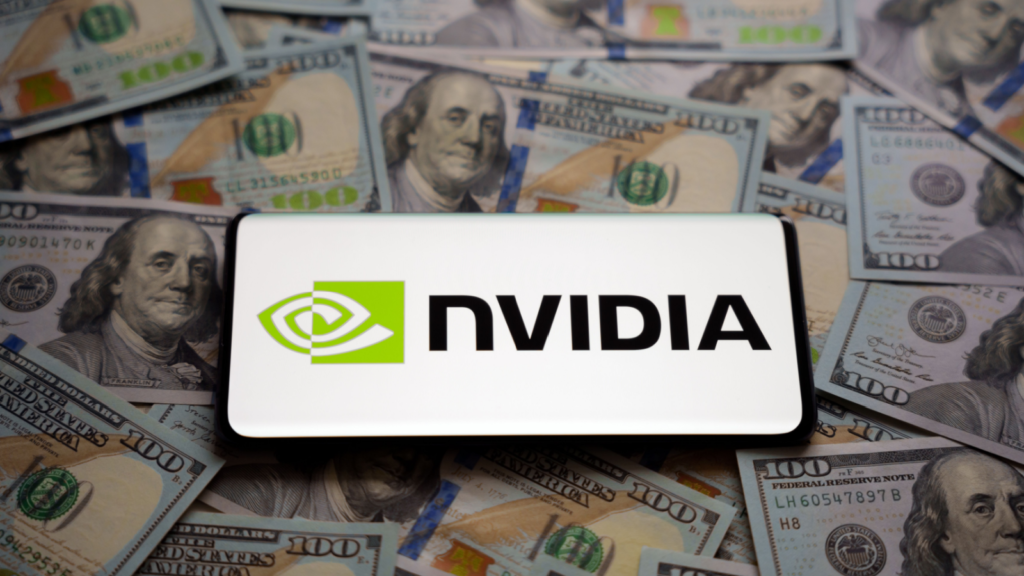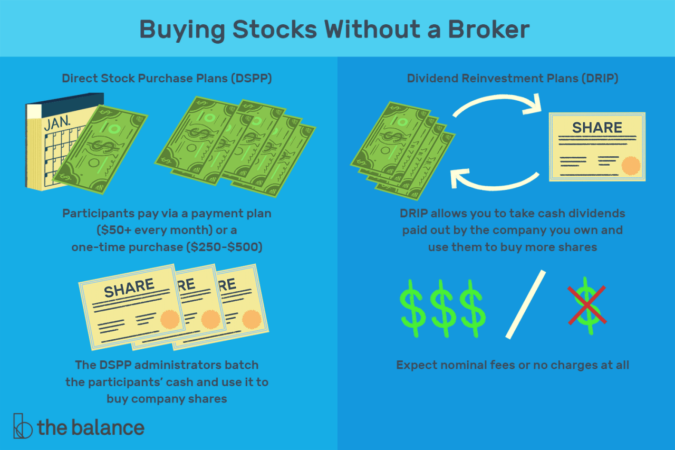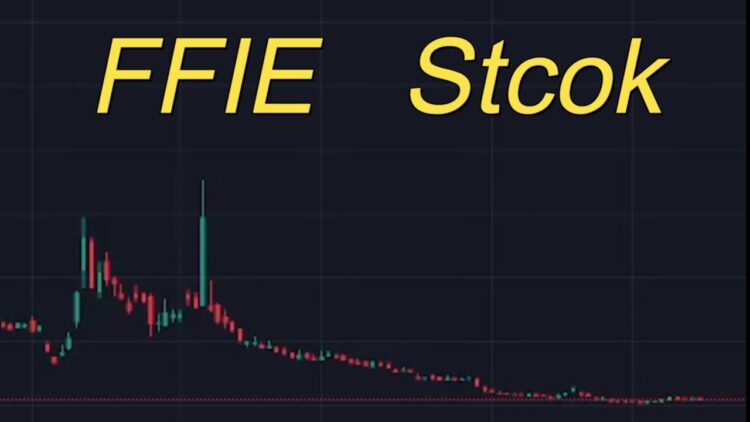
How to buy NVIDIA stock? It’s a question many investors ask, especially with the company’s dominance in the gaming and artificial intelligence markets. But navigating the world of stock trading can feel intimidating, even for experienced investors. This guide breaks down the process step-by-step, making it easy to understand and execute your first NVIDIA stock purchase.
From choosing the right brokerage account to placing your order, we’ll cover all the essentials. You’ll also learn about key factors influencing NVIDIA’s stock price and how to monitor your investment for long-term success. So, grab your laptop, a cup of coffee, and get ready to dive into the world of NVIDIA investing.
Understanding NVIDIA Stock
NVIDIA is a leading technology company known for its graphics processing units (GPUs) and artificial intelligence (AI) solutions. These GPUs are used in various applications, including gaming, data centers, and autonomous vehicles. Understanding NVIDIA’s business and its core products is crucial for assessing the company’s stock performance.
NVIDIA’s Business and Core Products
NVIDIA’s business can be categorized into three primary segments: Gaming, Data Center, and Automotive.
- Gaming: This segment is NVIDIA’s largest revenue generator, accounting for a significant portion of its total sales. The company’s GPUs are widely used in gaming PCs and laptops, providing high-performance graphics for immersive gaming experiences.
- Data Center: This segment has experienced substantial growth in recent years, driven by the increasing demand for AI and high-performance computing (HPC). NVIDIA’s GPUs are used in data centers for training and deploying AI models, as well as for accelerating scientific research and other computationally intensive tasks.
- Automotive: NVIDIA is a major player in the autonomous driving market, providing hardware and software solutions for self-driving vehicles. The company’s Drive platform offers a comprehensive suite of technologies for developing and deploying autonomous vehicles.
NVIDIA’s Financial Performance
NVIDIA has consistently delivered strong financial performance, with revenue and earnings growing steadily in recent years. The company’s financial performance is driven by factors such as the increasing adoption of GPUs in gaming, data centers, and other industries.
- Revenue: NVIDIA’s revenue has grown significantly in recent years, driven by strong demand for its products across its various segments. For example, in fiscal year 2023, NVIDIA’s revenue reached $26.97 billion, representing a significant increase compared to previous years.
- Earnings: NVIDIA’s earnings per share have also been growing steadily, reflecting the company’s strong profitability. In fiscal year 2023, NVIDIA’s earnings per share reached $6.68, indicating the company’s ability to generate significant profits from its operations.
- Profitability: NVIDIA’s profitability is reflected in its high gross margin, which typically exceeds 60%. This indicates that the company is able to generate significant profits from each dollar of revenue it generates.
Factors Influencing NVIDIA’s Stock Price
Several factors can influence NVIDIA’s stock price, including the following:
- Demand for GPUs: The demand for NVIDIA’s GPUs is a key driver of the company’s stock price. Strong demand from gamers, data centers, and other industries can lead to higher revenue and earnings, which can positively impact the stock price.
- Competition: NVIDIA faces competition from other companies in the GPU market, such as AMD and Intel. The intensity of competition can impact NVIDIA’s market share and profitability, which can influence its stock price.
- Technological Advancements: NVIDIA’s stock price is also influenced by its ability to innovate and develop new technologies. The company’s investments in research and development (R&D) are crucial for maintaining its technological leadership and staying ahead of the competition.
- Economic Conditions: The overall economic environment can also impact NVIDIA’s stock price. For example, a recession could lead to lower consumer spending on gaming and other discretionary items, which could negatively impact NVIDIA’s revenue and earnings.
- Investor Sentiment: Investor sentiment towards NVIDIA can also play a role in the stock’s price. Positive news and developments can lead to increased investor confidence, which can drive the stock price higher. Conversely, negative news or concerns can lead to a decline in the stock price.
Choosing a Brokerage Account

You’ll need a brokerage account to buy NVIDIA stock. Brokerage platforms offer a variety of features and services, so it’s essential to choose one that aligns with your investment goals and trading preferences.
Brokerage Platform Comparison
Here’s a comparison of popular brokerage platforms, highlighting their key features, fees, and suitability for NVIDIA stock trading:
Key Features
- Trading Platform: This refers to the software you use to place trades. Some platforms offer advanced charting tools, real-time market data, and customizable order types.
- Research and Analysis: Many platforms provide access to research reports, analyst ratings, and financial news, which can help you make informed investment decisions.
- Investment Options: Some platforms offer a wider range of investment options, including stocks, ETFs, mutual funds, options, and futures.
- Mobile App: A mobile app allows you to monitor your portfolio, place trades, and access account information on the go.
- Customer Support: Reliable customer support is crucial, especially for new investors. Look for platforms that offer multiple channels of support, such as phone, email, and live chat.
Fees
- Trading Commissions: Some platforms charge commissions on each trade, while others offer commission-free trading. Commission-free trading is often a good option for frequent traders.
- Account Fees: Some platforms may charge monthly account fees or inactivity fees.
- Data Fees: Some platforms may charge fees for real-time market data or advanced charting tools.
- Withdrawal Fees: Platforms may charge fees for withdrawing funds from your account.
Choosing a Suitable Platform
- Investment Goals: Consider your investment goals. If you’re a long-term investor, you might prefer a platform with strong research and analysis capabilities. If you’re a frequent trader, you might prioritize a platform with advanced trading tools and low commissions.
- Trading Style: Your trading style also plays a role. If you’re a beginner, you might want a platform with a user-friendly interface and educational resources. If you’re an experienced trader, you might prefer a platform with advanced features.
- Fees: Compare the fees charged by different platforms and choose one that fits your budget. Remember that low fees can make a significant difference over time, especially for frequent traders.
- Customer Support: Look for a platform with reliable customer support. This is especially important if you’re new to investing and have questions about your account or trades.
Opening and Funding an Account
You’ve decided to invest in NVIDIA stock, and you’re ready to get started! But before you can buy any shares, you’ll need to open a brokerage account and fund it. This section will guide you through the process.
Opening a Brokerage Account
Opening a brokerage account is your gateway to the stock market. Think of it as your personal vault for buying and selling stocks, bonds, and other investments. Here’s how to open one:
- Choose a Brokerage: Several online brokerages offer a range of features and fees. Consider factors like trading commissions, research tools, and customer support when making your choice. Popular options include Robinhood, TD Ameritrade, and Fidelity.
- Provide Personal Information: You’ll need to provide basic details like your name, address, Social Security number, and date of birth. The brokerage will verify your identity and may require you to upload documents like a driver’s license or passport.
- Fund Your Account: Once your account is approved, you’ll need to deposit money to start trading. You can fund your account through bank transfers, wire transfers, or even checks.
- Start Trading: Once your account is funded, you’re ready to buy NVIDIA stock or any other security you’d like.
Funding Your Account, How to buy nvidia stock
Funding your brokerage account is like putting money in your investment piggy bank. Here’s how it works:
- Bank Transfer: This is the most common and usually the fastest way to fund your account. You’ll typically link your bank account to your brokerage account and initiate a transfer. The funds will usually be available within a few business days.
- Wire Transfer: For larger amounts, you can use a wire transfer. This method is usually faster than a bank transfer, but it may come with higher fees. You’ll need to provide the brokerage with the wire transfer details.
- Check: You can also fund your account with a check. This method is typically the slowest, as it can take several days for the check to clear. You’ll need to mail the check to the brokerage’s address.
Securing Funds for Stock Purchases
Having a solid financial plan is key to investing. Here are some tips for securing funds for your stock purchases:
- Save Regularly: Setting aside a portion of your income each month will help you build a nest egg for investing. You can use a budgeting app or spreadsheet to track your expenses and identify areas where you can save.
- Consider a Side Hustle: If you need to boost your savings, consider taking on a part-time job or starting a side hustle. This can provide extra income that you can allocate towards your investments.
- Review Your Expenses: Take a close look at your spending habits and identify areas where you can cut back. This can free up money that you can use for investing.
- Invest Only What You Can Afford: Remember that investing in the stock market involves risks. Only invest money that you can afford to lose. Don’t use money that you need for essential expenses or debt repayment.
Placing an Order for NVIDIA Stock: How To Buy Nvidia Stock

Now that you’ve set up your brokerage account and funded it, you’re ready to buy NVIDIA stock. But before you click “buy,” there are a few order types you should understand.
Order Types
Choosing the right order type can impact the price you pay for your stock and how quickly your order is executed. Here are the two main types:
- Market Orders: A market order is the simplest type of order. It instructs your broker to buy or sell a specific number of shares at the best available price in the market. This means you don’t have a set price in mind and are willing to pay whatever the current market price is. Market orders are executed quickly but can be risky, as the price you pay could be higher than you expected if the stock is moving rapidly.
- Limit Orders: A limit order allows you to specify the maximum price you’re willing to pay for a stock (buy order) or the minimum price you’re willing to sell it for (sell order). If the stock doesn’t reach your specified price, your order won’t be executed. Limit orders give you more control over the price you pay but may take longer to fill, especially if the stock isn’t moving in your desired direction.
Placing an Order
Once you’ve chosen your order type, you’ll need to provide your broker with some basic information to place your order:
- Ticker Symbol: This is the unique identifier for the stock you want to buy, in this case, NVDA.
- Quantity: The number of shares you want to buy.
- Order Type: Whether you want to place a market order or a limit order.
- Limit Price: If you’re placing a limit order, you’ll need to specify the maximum price you’re willing to pay (for a buy order) or the minimum price you’re willing to sell for (for a sell order).
Most brokerage platforms have user-friendly interfaces that guide you through the process of placing an order. Simply search for the ticker symbol “NVDA,” enter the quantity, select your order type, and submit your order.
Important Note: It’s crucial to review your order details carefully before submitting them to ensure you’re buying the correct number of shares at the desired price.
Monitoring Your Investment

You’ve taken the leap and bought NVIDIA stock! But your journey doesn’t end there. Monitoring your investment is crucial to ensure your financial goals are on track. It’s like keeping an eye on your portfolio’s health – you want to make sure it’s growing strong.
Regularly checking your investment’s performance allows you to make informed decisions. You can identify trends, adjust your strategy based on market fluctuations, and even capitalize on opportunities to maximize your returns.
Tools and Resources for Tracking Stock Performance
There are several tools and resources available to help you keep tabs on your NVIDIA stock.
* Brokerage Account: Your brokerage account is your go-to source for real-time stock quotes, transaction history, and account balance. Most platforms provide charts and graphs to visualize your investment’s performance over time.
* Financial News Websites: Websites like Yahoo Finance, Google Finance, and Bloomberg offer detailed financial news, stock quotes, and analysis. You can set up alerts to receive notifications when significant events occur.
* Stock Tracking Apps: Mobile apps like Robinhood, TD Ameritrade, and Fidelity provide on-the-go access to your portfolio and stock information. These apps often offer features like personalized news, stock alerts, and real-time charts.
* Financial Data Providers: Companies like Morningstar and FactSet offer comprehensive financial data, including historical stock prices, company financials, and analyst reports. These services are typically paid, but they provide valuable insights for serious investors.
Adjusting Your Investment Strategy
Market conditions can be unpredictable, and your investment strategy might need adjustments based on the situation.
* Market Volatility: If the market experiences significant volatility, you might consider adjusting your position. For example, you could reduce your investment in NVIDIA if you anticipate a downturn or increase your position if you believe the company’s prospects are strong.
* Company Performance: Keep an eye on NVIDIA’s financial performance, news releases, and analyst reports. Positive news can indicate growth potential, while negative news might warrant a reevaluation of your investment.
* Your Financial Goals: Your investment strategy should align with your financial goals. If your goals change, you might need to adjust your investment in NVIDIA accordingly.
Remember, monitoring your investment is an ongoing process. Regularly reviewing your portfolio and making informed decisions can help you navigate the market and achieve your financial goals.
Managing Your Portfolio
Investing in NVIDIA stock, or any stock for that matter, is just one piece of the puzzle when it comes to building a successful investment portfolio. A portfolio is simply a collection of your investments, and managing it effectively is crucial to achieving your financial goals.
Diversification
Diversification is a fundamental concept in investing. It involves spreading your investments across different asset classes, such as stocks, bonds, real estate, and commodities. This helps to reduce risk by mitigating the impact of any single investment performing poorly. For example, if you invest only in NVIDIA stock and the tech sector experiences a downturn, your entire portfolio could suffer. However, if you diversify your portfolio across different sectors, you are less likely to be significantly impacted by a downturn in any one sector.
Setting Investment Goals
Before you start investing, it’s important to set clear investment goals. This will help you determine how much risk you’re willing to take, what your time horizon is, and what your desired return is. For example, if you’re saving for retirement, you’ll likely have a longer time horizon and be more comfortable with taking on some risk. On the other hand, if you’re saving for a down payment on a house, you’ll have a shorter time horizon and may prefer to invest in more conservative assets.
Portfolio Management Tips
Here are some tips for managing your portfolio effectively:
- Regularly review your portfolio: Market conditions change, and your investment goals may evolve over time. It’s important to review your portfolio regularly and make adjustments as needed. This includes rebalancing your portfolio to ensure your asset allocation remains aligned with your goals.
- Consider your risk tolerance: Risk tolerance is your ability to handle fluctuations in the value of your investments. It’s important to choose investments that align with your risk tolerance. If you’re risk-averse, you may want to invest in more conservative assets like bonds. If you’re comfortable with risk, you may be willing to invest in more volatile assets like stocks.
- Don’t chase returns: It’s tempting to chase high returns, but it’s important to remember that past performance is not necessarily indicative of future results. Instead, focus on investing in companies with strong fundamentals and a long-term growth potential.
- Stay informed: Stay up-to-date on market trends and economic news that could impact your investments. This will help you make informed decisions about your portfolio.
Final Summary
Investing in NVIDIA stock can be a smart move, especially if you’re bullish on the future of gaming and AI. By understanding the basics of stock trading, choosing a reliable brokerage platform, and monitoring your investment wisely, you can confidently take the leap into the world of NVIDIA ownership. Remember, every journey starts with a single step, so take that first step and see where it leads you.
Top FAQs
What are the risks associated with investing in NVIDIA stock?
Like any stock, NVIDIA carries inherent risks. The company’s stock price can fluctuate based on factors like market conditions, competition, and technological advancements. It’s important to conduct thorough research and understand the risks before investing.
How much money do I need to start investing in NVIDIA stock?
Most brokerage accounts have minimum deposit requirements, which can vary. You can start with a small amount and gradually increase your investment as you become more comfortable.
What are the best resources for learning more about NVIDIA stock?
You can find valuable information on NVIDIA’s website, financial news websites, and investment forums.





